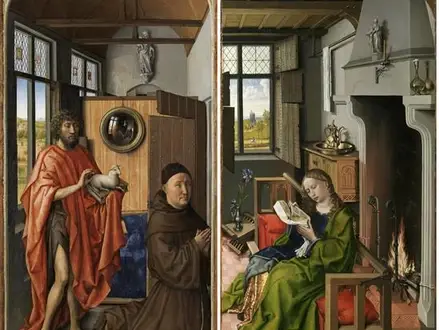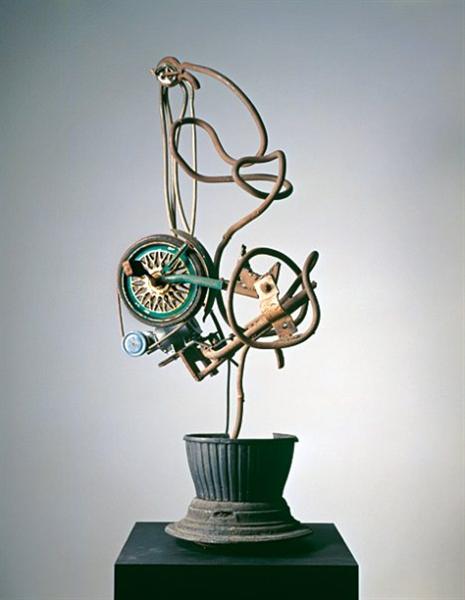Title of Artwork: “Werl Altarpiece”

Artwork by Robert Campin
Year Created 1438
Summary of Werl Altarpiece
This triptych altarpiece, known as the Werl Triptych (or Heinrich von Werl Triptych), was created in Cologne around 1438, but the central panel has since been destroyed.
Madrid’s Prado Museum today houses both of the wing’s original components. He is often considered to have been Robert Campin, however this is not unanimously agreed upon as the Master of Flémalle.
There are some art historians who believe it was painted as a pastiche by either Campin’s workshop or a follower of the Master of Flémalle.
All About Werl Altarpiece
As she reads from her bound and gold-gilded holy book in front of an open fire that glows with golden light, Saint Barbara appears to be engaged in her devotion. Heinrich von Werl, a donor, is depicted kneeling in prayer with John the Baptist in front of the missing devotional center-panel tableau, which is missing and unrecorded on the left wing.
Light and form are treated with great complexity in the two remaining panels that are housed in Madrid. Late 15th century to early 1600s: Early Netherlandish painting became a major influence on other artists until it was revived in the early 19th century.
An inscription on the left wing says Heinrich von Werl, the Cologne provincial leader at the time of the commission in 1438, paid for the panels’ creation. In the left wing, he is depicted bowing before Saint John the Baptist in reverence. The convex mirror in the midground, as in the Arnolfini Marriage of 1434, reflects the scene back at the viewer in this panel, which is a nod to Jan van Eyck.
It has been speculated that the middle panel, which has no surviving copies, inventory records, or descriptions, was installed in the same room as Saint Barbara. As evidenced by the sudden termination of roof beam lines and window frame lines, as well as the direction of falling light, this is most likely.
We may have seen a Virgo inter Virgines in the centre panel. This suggests, based on a lack of surviving evidence, that the triptych was either placed in a private room or in a church large enough to accommodate multiple altarpieces before the mid-nineteenth century. However, it began to have an impact about the middle of the 15th century.
That of Barbara, despite numerous imperfections in her anatomy, is considered the superior piece of art in comparison to the other two.
St. Barbara can be identified from the tower seen through the open window on her left. She was a Christian martyr from the third century who became a saint during the Middle Ages.
In order to protect her from unwanted suitors, her wealthy pagan father Dioscorus reportedly imprisoned her in a tower. Her father eventually murdered her for allowing a priest inside the house to baptise her.
During the time of Campin, she was a favourite subject for artists of that era. An incomplete 1437 wood panel by Jan van Eyck depicts an envisioned Gothic tower, with a focus on the intricate architectural features.
Information Citations
En.wikipedia.org, https://en.wikipedia.org/.






















